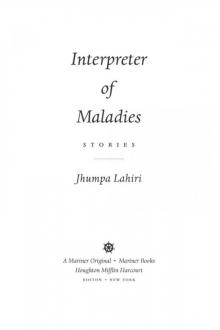


This division was not easy or peaceful and was largely based on religious grounds. This ended when India gained their independence in 1947, and divided India into two independent countries of India and Pakistan. The history of the Partition goes back to when England first colonized India in the 1600s. While there are many factors that play into the immigration of Indians to America the main driving force in the 20th century was the Partition. Her experiences growing up in the United States, but frequently visiting India allowed her to draw from personal experience to pour into her work. When the collection of stories was published, America’s growing economy led to a peak of foreign immigration and the Indian American population was steadily growing. Growing up with a mixture of cultures greatly influenced her life, specifically her writing, as these themes of characters trying to balance their heritage and their new life in America appear frequently. Her family moved from London to the United States when she was very young. Lahiri was able to draw from her own experiences for much of the context of the stories as she is the daughter of Indian immigrants. The rich history and diversity of Indian culture play a huge role throughout the stories, some of them focusing on religion, some using the food traditions of the country. They often take on the challenges of relationships and dynamics between couples and families at difficult times in their lives. The collection of nine different stories encompass the lives and experiences of various Indian Americans.

Jhumpa Lahiri officially published Interpreter of Maladies in 1999 but had been working towards this accomplishment all her life.


 0 kommentar(er)
0 kommentar(er)
